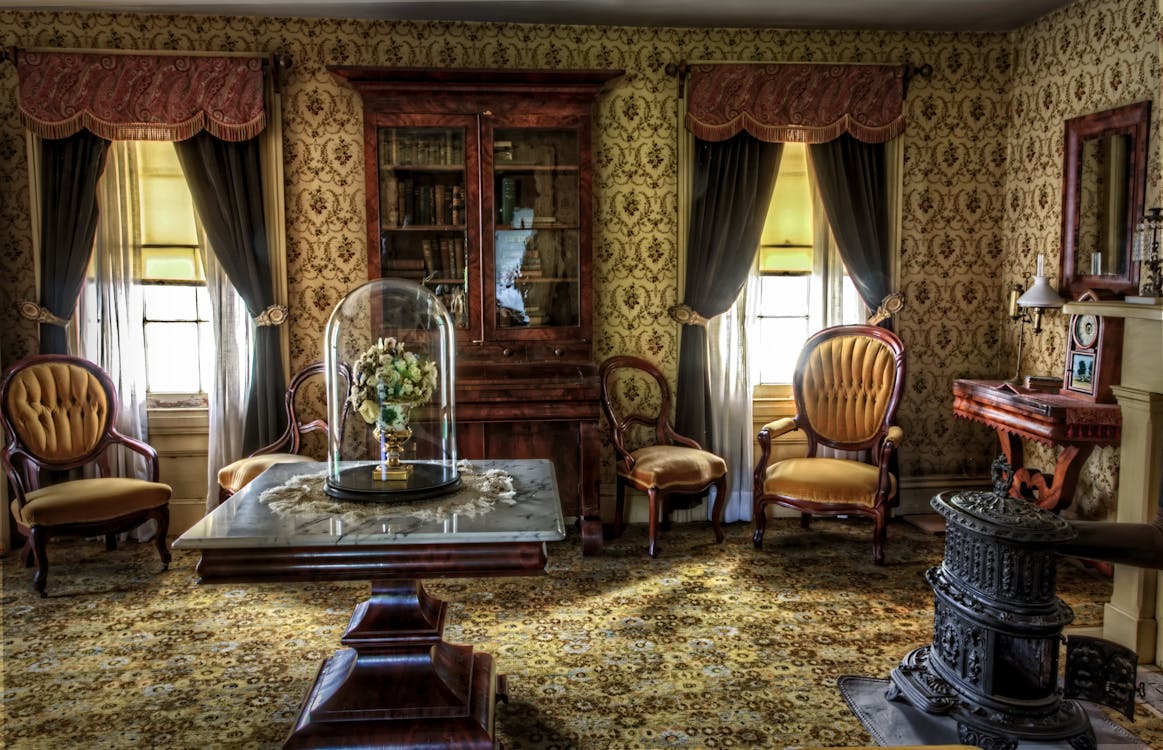
The History of Window Coverings: From Ancient Civilizations to Modern Homes
Window coverings have actually been part of human history for countless years, evolving from primitive materials to the advanced designs we take pleasure in today. While we frequently appreciate how window treatments beautify our homes, couple of understand the interesting journey that brought them right here. Let's travel via time and explore just how societies across the world have actually shaped the development of window curtains, shades, and window drapes into what we now take into consideration vital parts of home style.
Old Beginnings: Function Before Fashion
The earliest home window coverings weren't about making a home look classy; they were created out of need. Ancient Egyptians are thought to have utilized reeds and papyrus to cover openings in their homes, supplying shade and some security from the unrelenting sunlight. These treatments were light-weight and very easy to change, best for the severe desert environment.
At the same time, throughout the Mediterranean, the Greeks and Romans introduced textiles like linen and woollen to their interiors. These very early types of window drapes hung loosely over doorways and windows, assisting to regulate indoor temperatures and include a touch of personal privacy. Roman architecture later on affected just how home window treatments were designed to work not just as a guard, however as a lavish statement in wealthier houses.
The Middle Ages: Heavy Fabrics and Practical Uses
As European castles and homes expanded in size, home windows came to be larger-- and so did the demand for better protection. Throughout the Middle Ages, heavy materials like velour and brocade were favored for their capacity to block drafts and retain warmth. These thick curtains were not simply decorative; they worked as essential elements for warmth and comfort in stone-built frameworks.
Home window therapies in this duration were generally abundant in shade, elaborately stitched, and often doubled as makeshift walls in large halls. Decorative patterns and lush fabrics represented social condition, making window coverings a valuable part of interior decor also after that.
The Renaissance: Artistry Meets Practicality
The Renaissance stimulated a renewed rate of interest in art, culture, and home design. With advancements in weaving and fabric manufacturing, home owners accessed to a broader range of fabrics and patterns. Home window treatments came to be a creative extension of a home's visual, usually echoing the splendour located in Renaissance paints and sculptures.
Tapestries and embroidered window curtains were a staple of upscale homes, their styles telling stories of mythical, spiritual, or day-to-day life scenes. The fad of using drapes not only for windows but also around beds and entrances came to be prevalent, weding function and beauty.
The 18th and 19th Centuries: Refinement and Innovation
As the Industrial Revolution gained energy, fabric manufacturing took off. Fabrics came to be a lot more inexpensive and available to the middle course, causing a period where home window treatments were not just for the rich. Advancements in poles, rings, and pulley systems allowed for the very early versions of what would certainly later inspire Hunter Douglas motorized blinds.
Throughout the Victorian age, the style of home window treatments became even more layered and luxuriant. Homes flaunted heavy window drapes layered over lace sheers, with tassels, fringe, and elaborate tiebacks finishing the look. Window treatments were no longer simply useful yet essential elements of interior decoration, reflecting the home owner's taste and status.
The 20th Century: Embracing Minimalism and Technology
The 20th century brought transformations. The clean lines of innovation shifted choices from luxury to simpleness. Home owners relocated away from hefty drapery towards lighter, more functional designs that stressed the architecture of the home instead of overwhelming it.
As technology progressed, so did home window treatments. Developments led to the development of items like Hunter Douglas motorized shades, supplying home owners ease and exact light control at the touch of a switch. This technological leap was greater than a luxury; it represented a new age of living where convenience, style, and automation balanced easily.
Material selections also ended up being a lot more varied, with artificial products providing budget friendly, long lasting, and easy-to-maintain choices. This change allowed individuals to explore various looks and performances, depending upon the requirements of each space.
Today's Window Coverings: A Blend of Style and Smart Living
Today, home window treatments are a smooth mix of form and feature. Whether you like standard window curtains or sophisticated Hunter Douglas motorized shades, the series of alternatives is more comprehensive than ever before. Modern house owners can select coverings that perfectly match their lifestyle, style, and sustainability preferences.
Smart home integration has actually taken home window coverings to an entirely brand-new level. Systems connected to smart devices or voice-activated assistants use the capacity to readjust tones based on time of day, temperature level, and even your mood. And while motorized remedies like Hunter Douglas motorized blinds are at the forefront of this activity, there stays a deep appreciation for the timeless elegance that typical drapes and drapes offer a room.
Ecologically conscious selections are also obtaining popularity, with products like bamboo, organic cotton, and recycled materials becoming essential consider buying decisions. Sustainability, when a second thought, is now a leading fad in interior design, particularly when it comes to window therapies.
The Ever-Evolving Art of Dressing Windows
Home window coverings have certainly come a long way since the days of papyrus screens and woolen towels. From the heavy, elaborate go right here window drapes of middle ages Europe to the sleek, technology-driven choices readily available today, their development mirrors the broader adjustments in culture, innovation, and layout choices.
In every era, the objective behind window therapies has continued to be regular-- using defense, comfort, and charm-- however the products, modern technology, and designs have constantly progressed to fulfill the changing needs of the moments. As homes become smarter and lifestyles remain to move, it's enjoying visualize what the future of home window treatments will certainly resemble.
Follow us for even more amazing expeditions right into home layout fads, and remain tuned for even more stories that celebrate the timeless elegance and development discovered in every corner of your space!
 Danny Tamberelli Then & Now!
Danny Tamberelli Then & Now! Kirk Cameron Then & Now!
Kirk Cameron Then & Now! Elin Nordegren Then & Now!
Elin Nordegren Then & Now! Tina Majorino Then & Now!
Tina Majorino Then & Now! Naomi Grossman Then & Now!
Naomi Grossman Then & Now!